These wine tips cover some of the stranger bits of language and etiquette used by wine connoisseurs.
Come to think of it, the world of wine is full of weird quirks.
For example, have you ever watched a bunch of elegant wine drinkers spit out hundreds of dollars’ worth of wine? (This is very common at professional tastings!)
So, here are 10 wine tips that’ll help you fake it ’til you make it.
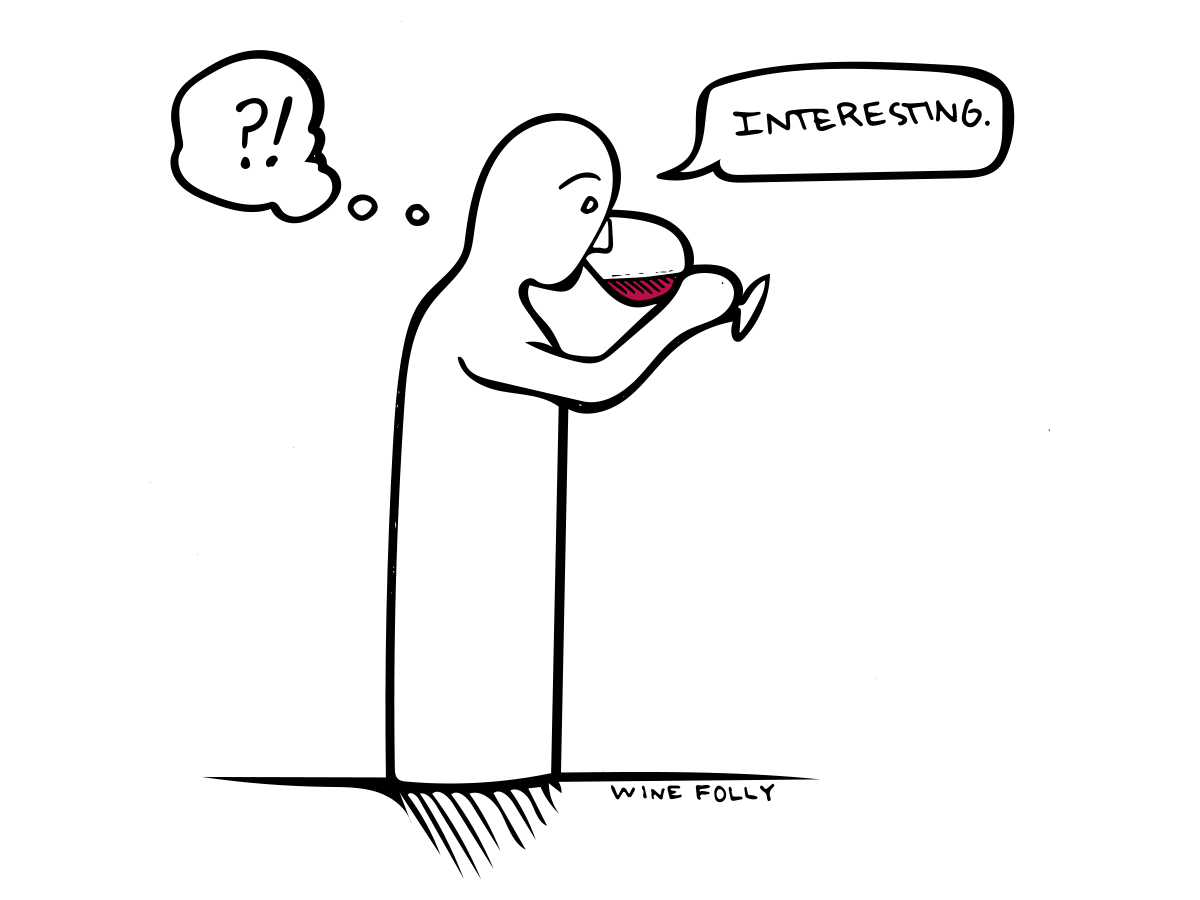
1. If you don’t know what to say, try, “Interesting.”
This is the non-committal adjective of the year! Don’t panic: just swirl your wine, sniff it, and mutter, “Interesting…” to yourself. It’ll buy you some time while you try to remember the difference between a peach and a nectarine, or while you decide whether or not to admit you hate the wine you put in your mouth.
Truly, though, the wine tasting process is pretty easy to learn.
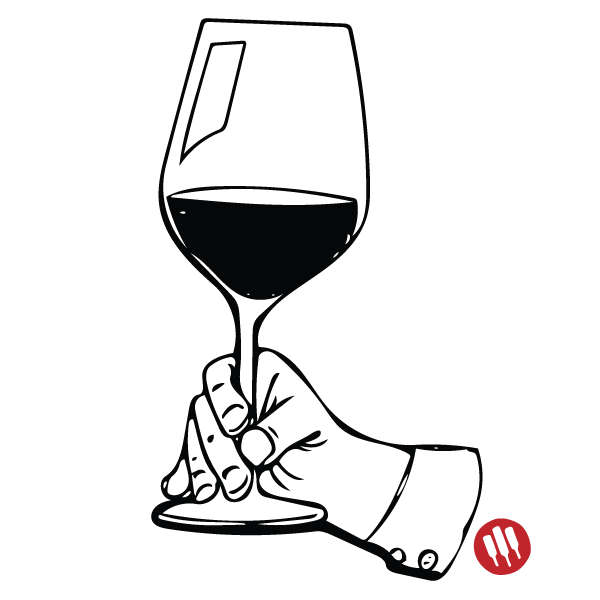
2. Hold your glass by the stem or the base.
This might seem like a snobby thing to worry about, but it’s practical. Wine temperature is a big deal to wine pros. (We’ve seen people argue over a matter of a single degree: ugly).
Also, holding a glass a certain way is the secret handshake of the wine elite.
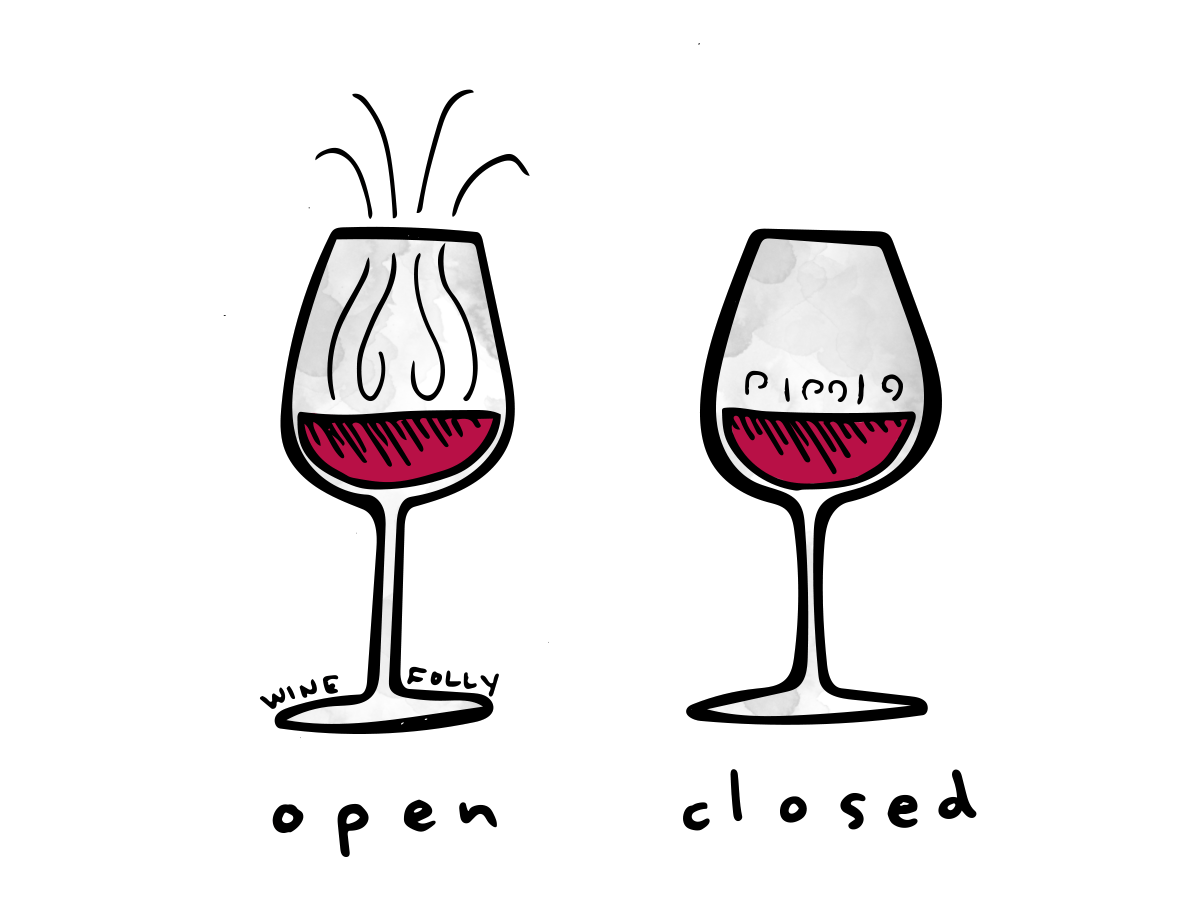
3. If you can’t smell the wine, it might be “closed.”
Most of us should be able to smell any wine, no matter how subtle it is (unless of course you suffer from anosmia). Still, some wines are seriously tough to suss out aromas.
Why? Well, there are several reasons for this. For one, wines sit inside a bottle for a year or more without any additional oxygen. In this state, chemical reactions that age wine pull other elements (besides an “O”) for the task. This is why decanting wine (especially reds) is so important.
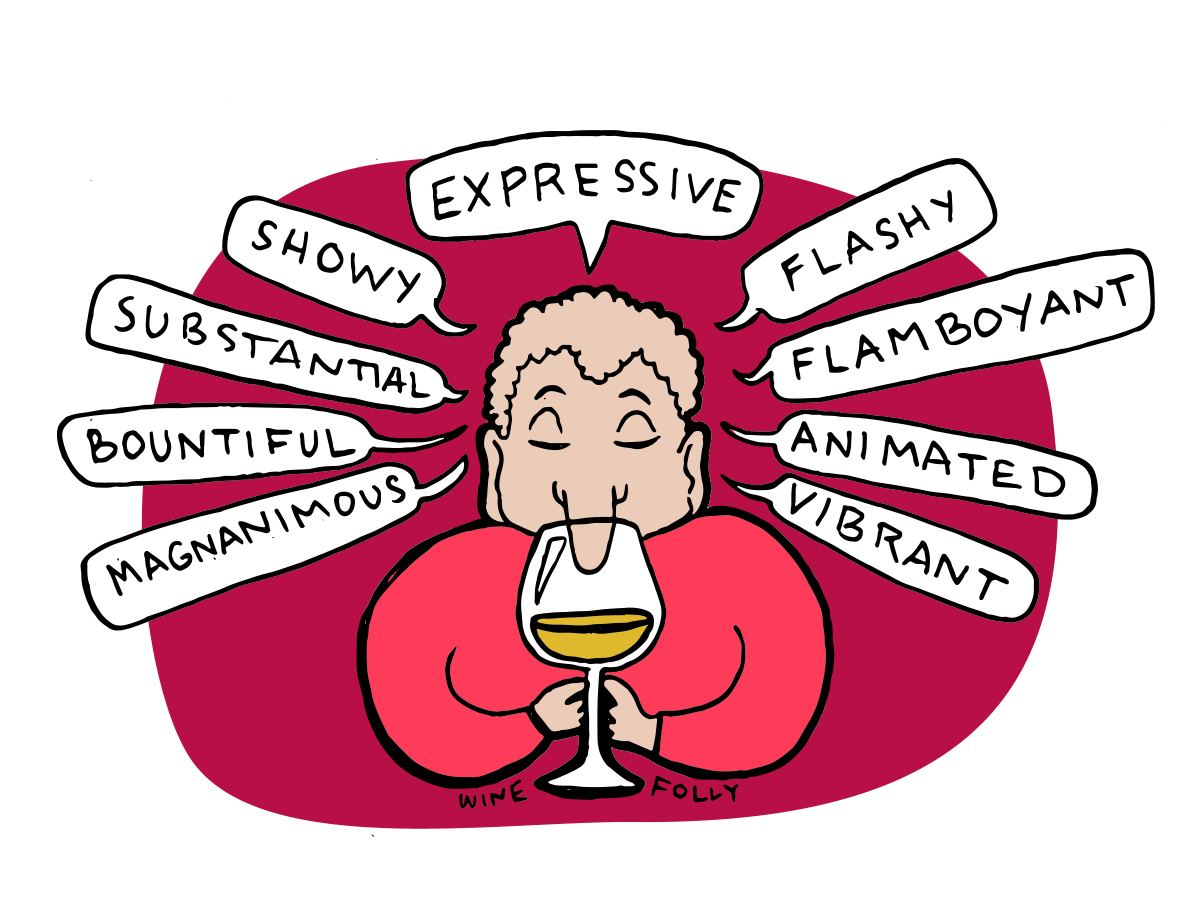
4. The term “expressive” wins points.
Is the wine crazy aromatic, like a spritz of perfume? Or, are the aromas as flamboyant and talkative as your drunk aunt at a wedding?
Just like you’d describe that one friend you have, it’s nicer to say “expressive” instead of “they won’t shut up.” Perhaps “expressive” is too grandiloquent? We think not! Here are some more words to try: flashy, exuberant, lively, vibrant, animated, showy, substantial, bountiful, and magnanimous (your 8th-grade English teacher would be proud!).
We pulled 40 wine descriptions if you want to know more.
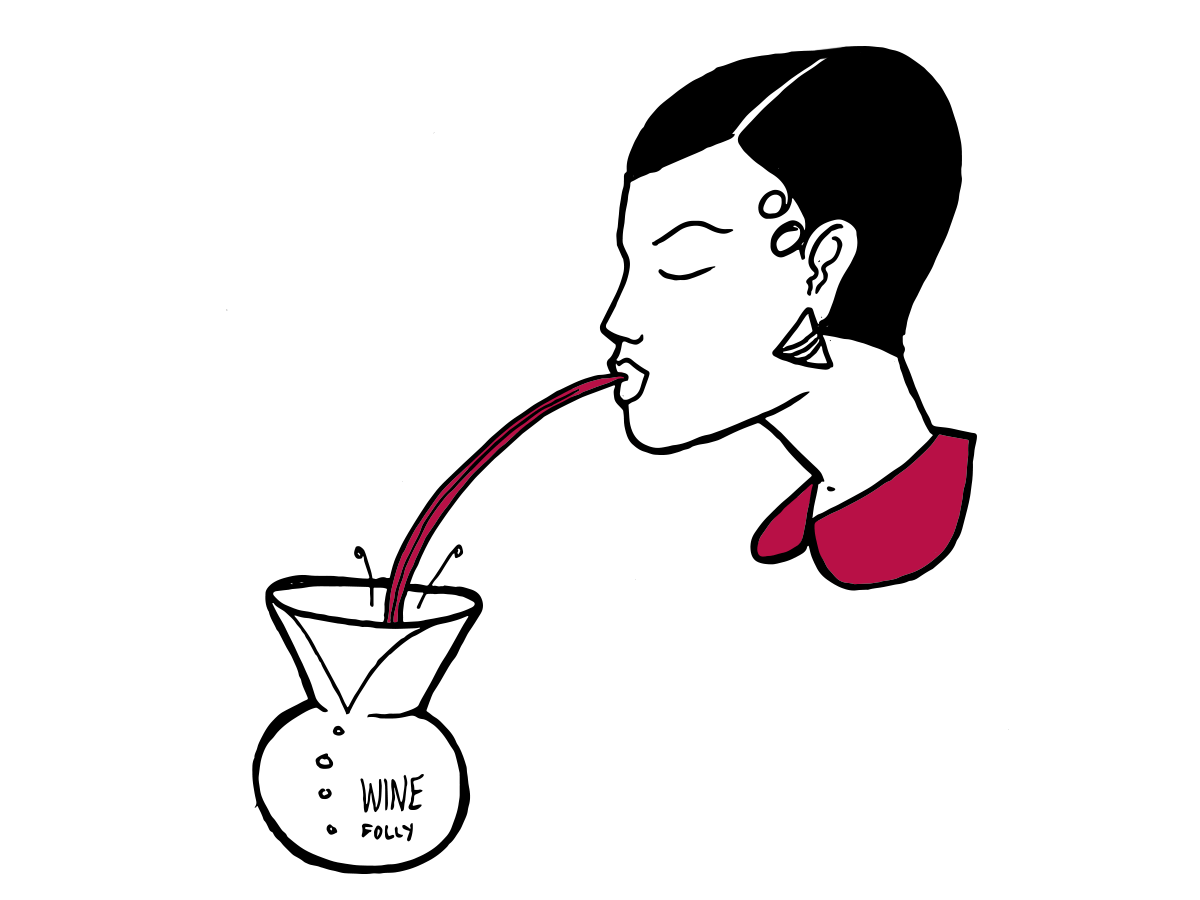
5. Despite common logic, spitting is classy.
Of all the wine tips, this is the weirdest. It’s true that you don’t always have to spit. But if you’re going through several bottles, spitting is a great idea (no matter what your mom told you when you were little). It keeps you sober (ish) and focused on “tasting” rather than “drinking.”
What’s more important is that you practice your spitting skills. It makes a difference.
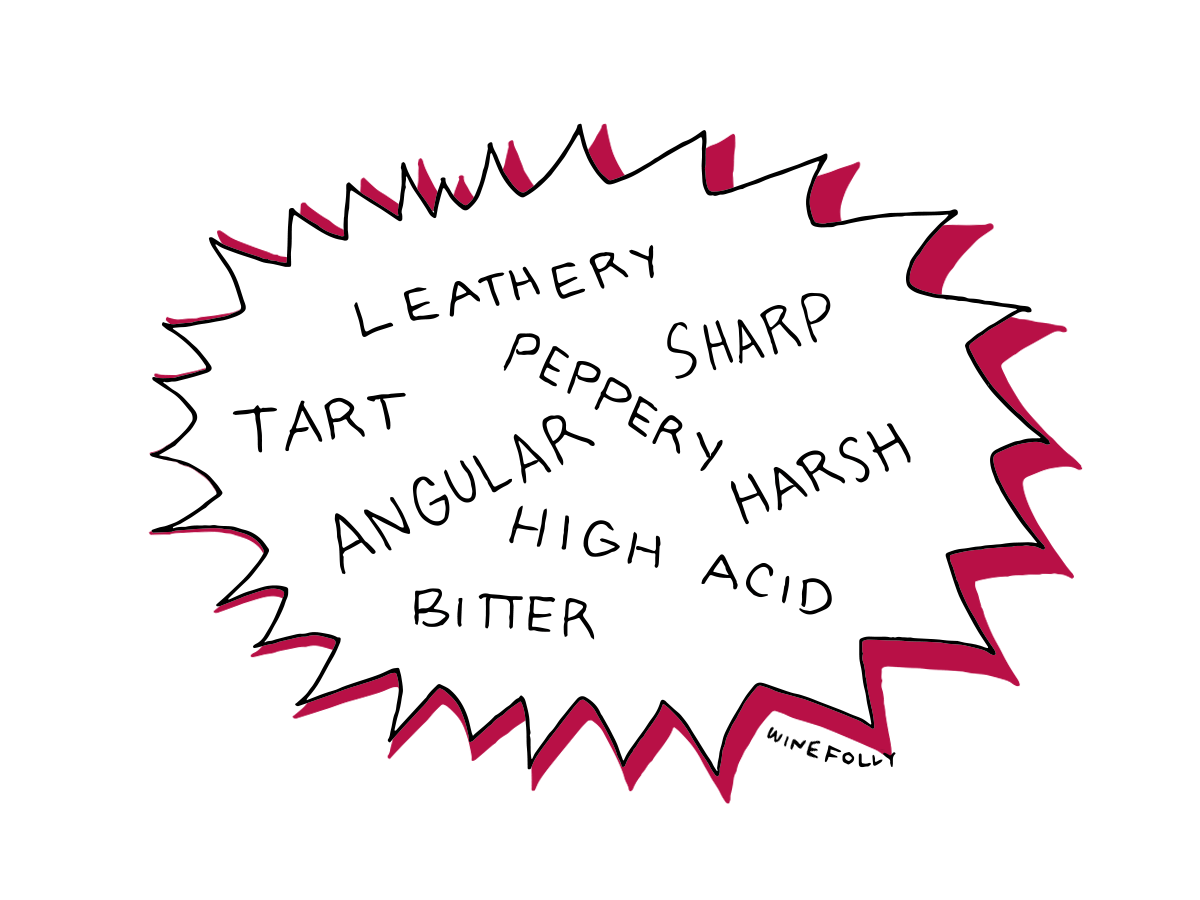
6. Oddly enough, “spicy” isn’t a wine term.
When it comes to wine, “spicy” isn’t really a thing. This gets confusing when you consider how many actual spices pop up in tasting notes: anise, cloves, black pepper, and cinnamon.
Try to be specific, like using “peppery” or “leathery” when you sense “spice.” And, if the wine is sharp-tasting, it might have high acidity.
7. High alcohol wines are referred to as “hot.”
Think of that alcohol burning down your throat and sending up fumes like steam off of a boiling pot of water; that’s what we mean by “hot.” Alcohol level is an interesting feature in wine because it increases the perception of body.
Wine has an incredibly high range of alcohol levels starting at about 5% and reaching as high as 24%!
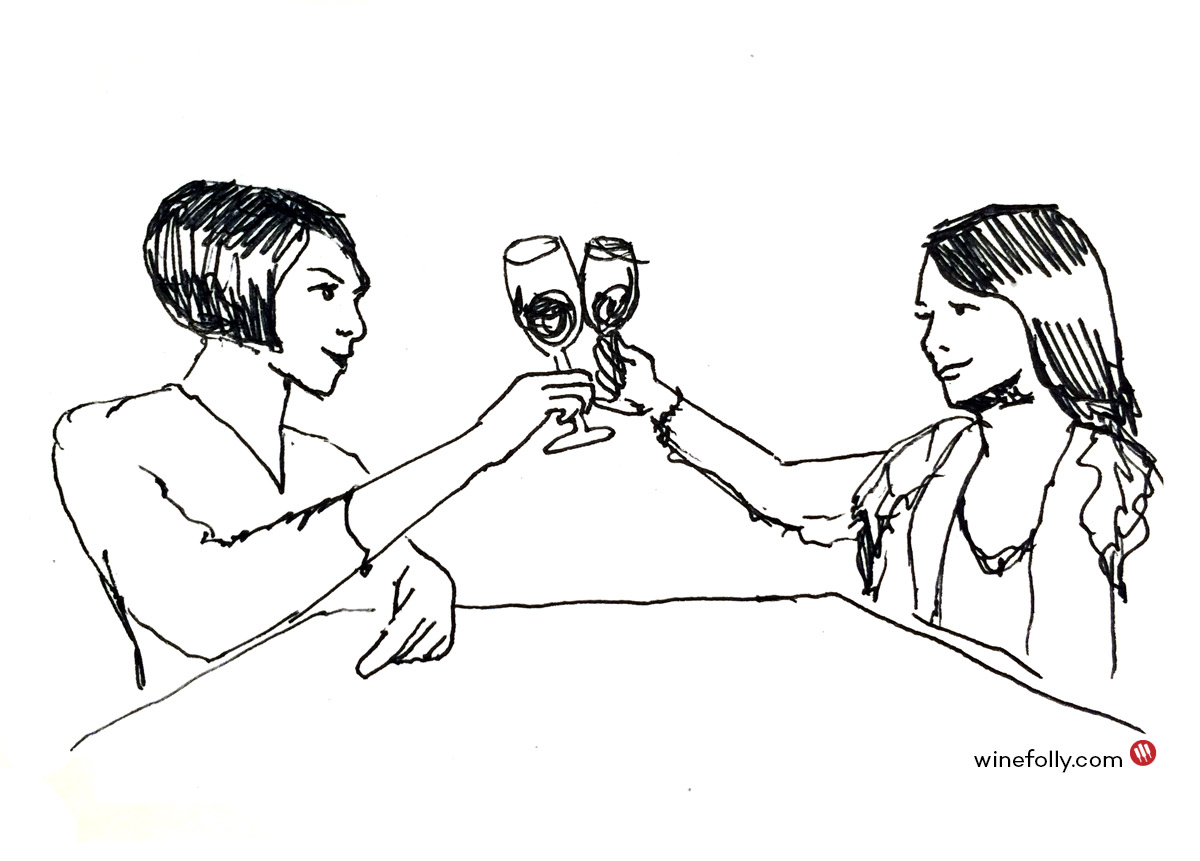
8. Good clinking is a good practice!
There are numerous theories about the origin of clinking glasses. (Sadly, there’s no evidence that it started with paranoid leaders splashing wine together to avoid poisons).
But one thing’s for sure: the bowl is the strongest part of the glass, and it helps make that wonderful bell sound that stands out as the national anthem of wine drinkers all over the world. Also, look your toasting partner in the eye; it’s just good manners. You wouldn’t slow dance with someone and look over their shoulder the whole time, would you? On second thought, don’t answer that question…
9. Fruit-forward vs. earthy: know your preference!
While there’s no scientific proof, wines tend to fall into two categories: those carried by fruitier flavors, and those with more earthy, savory, “terroir-driven” notes. Think of the difference between a big, bold red with lots of berry flavors, and a lean, bracing red with complex flavors that hint at the earth from which the vines sprang.
There’s room for both at every tasting, but knowing your style will keep you from spending money on wine you don’t like.
Need some terms to describe those wines? Check out these popular wine tasting terms.
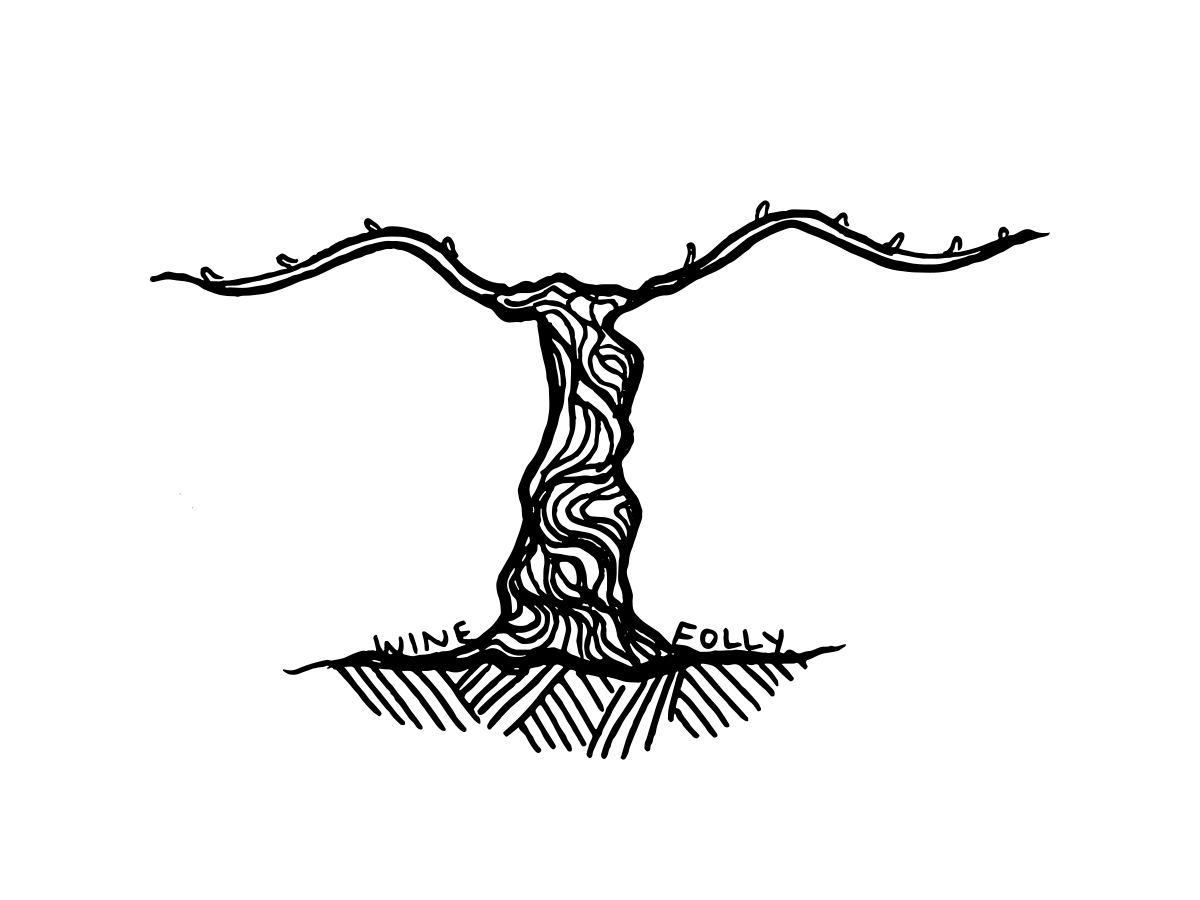
10. When all else fails, blame it on the terroir.
Terroir might just be the most misused and overused word in wine.
In a nutshell, terroir encompasses all the factors that drive uniqueness: the soil, the weather, the culture, and the geography (and a whole lot more, depending on who you ask). It’s the reason a Sauvignon Blanc from France tastes distinctly different from one made in New Zealand. Of course, science has only a little bit of insight as to what’s going on.
So for now, if you can’t explain why a wine tastes the way it does, just say it’s the terroir.
Learning about wine has many fun side effects, including looking like a badass around your peers. But honestly, there is more to know than just these 10 wine tips.